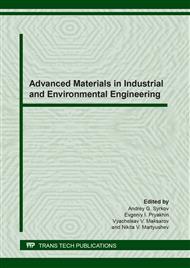p.45
p.51
p.57
p.64
p.74
p.80
p.87
p.97
p.103
Improvement of Semiconductors Quality Using Isotopic Nanoengineering
Abstract:
The article covers a solution of a modern electronics problem: improvement of data transmission device speed using the example of fiber-optic communication lines (FOCL). The data processing rate and throughput of transmission channels are determined by capabilities of the optoelectronics and, first of all, by the performance of its hardware components. The article presents all possible ways to improve the performance of FOCL. Design and production of communication devices moves to the nanotechnological level that opens up new possibilities for creation of semiconductors with advanced characteristics. The methods and means chosen for production of the nanostructures are crucial for creation of the new generation hardware components. Graphene is considered as the most promising material for creation of the new generation hardware components for semiconductors. Potential capabilities of the material are not yet fully explored. Isotopic nanoengineering is used as the method for production of the nanostructures with improved characteristics. In particular, we use the neutron transmutation doping technology based on irradiation of a graphite sample with a neutron flux. This method increases content of the 13C isotope (natural graphite contains only about 1.1% of this isotope). As a result, the band gap opens bringing the properties of the material closer to the properties of a semiconductor. The closer the width of the graphene band gap to the width of the silicon band gap, the closer the properties of graphene to the properties of semiconducting silicon. Furthermore, all properties of the natural graphite (high throughput and sensitivity to almost the entire optical spectrum) are preserved.
Info:
Periodical:
Pages:
74-79
Citation:
Online since:
July 2020
Authors:
Keywords:
Price:
Сopyright:
© 2020 Trans Tech Publications Ltd. All Rights Reserved
Share:
Citation:


